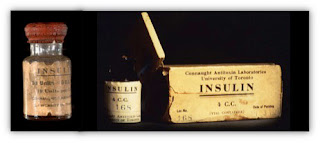HOW DOES IPTLD WORK, SPECIFICALLY?
Put simply, chemotherapy drugs have to get inside cancer
cells to kill them. Conventionally, this is achieved by using high doses of
these drugs, leading to very undesirable and sometimes even fatal side effects.
One of the little known facts about cancer cells is that
they make their own insulin in order to obtain glucose-the fuel they need in
large amounts as they grow and divide at an abnormally rapid rate.
We take advantage of insulin’s action. By giving cancer
cells insulin, we prime the membranes to open up. Coordinating this event with
the introduction of low-doses of chemotherapy, we get much more of the
chemotherapy drugs inside the cancer cells to kill them, leaving healthy cells
unharmed. This process allows us to avoid dangerous, undesirable dose-related
side effects.
Described in technical terms, Insulin Potentiation Therapy
(IPT) manipulates the mechanisms of malignancy to therapeutic advantage by
employing insulin as a biologic response modifier of cancer cells’ endogenous
molecular biology. The autonomous proliferation of malignancy is supported by
autocrine secretion of insulin for glucose/energy uptake by cancer cells, and a
similar autocrine and/or paracrine elaboration of cellular factors to stimulate
cancer growth. Amongst these, the insulin-like growth factors have been
identified as the most potent mitogens for cancer cells. Of primary importance
for the appreciation of IPT is the little known fact that cancer cell membranes
have six time more insulin receptors and ten times more IGF receptors, per
cell, than the membranes of host normal tissues. Further, insulin can
effectively cross-react with and activate cancer cell IGF receptors. Thus, per
cell, cancer cells have sixteen times more insulin-sensitive receptors than
normal tissues. As ligand effect is a function of receptor concentration, these
facts serve to differentiate cancer from normal cells –a vital consideration
for the safety of cancer chemotherapy.
Because of its favorable side effect profile, cycles of
low-dose chemotherapy with IPT may be done more frequently, usually once and
sometimes twice a week. There is good patient acceptance of the mild
adrenergic, hypoglycemic side effects of the protocol. The “rescue phenomenon”
occasioned by the timely administration of hypertonic glucose actually serves
to provide patients with an experiential metaphor for the rapid recovery of
their well-being. It is acknowledged that cancer treatment can often be
debilitating for patients. In those undergoing cancer treatment with IPT, an
overall gentler experience promotes their concurrent involvement in other
important elements of Comprehensive Cancer Care, which includes nutrition for
immune system support, and mind-body medicine to support a healing
consciousness.
-Insulin Potentiation Therapy Manual: Articles, Supportive
Research and Case Studies-




Comments
Post a Comment